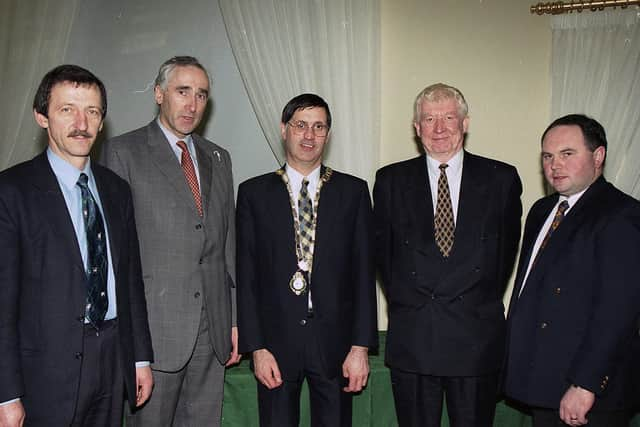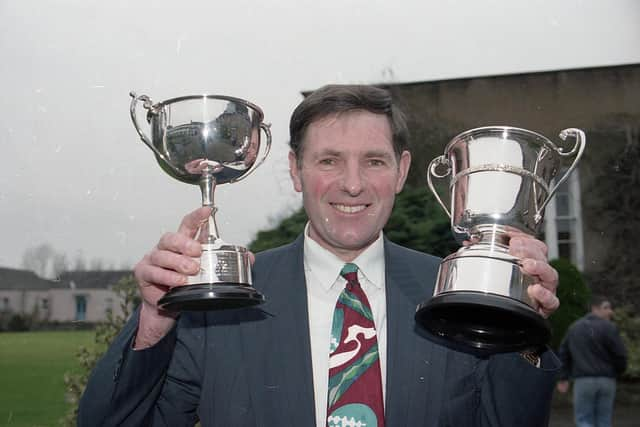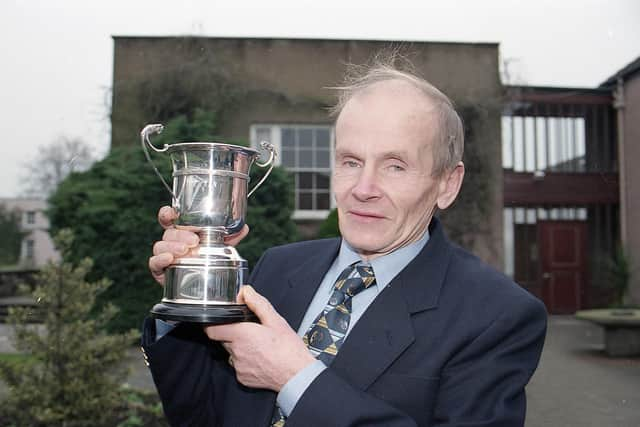‘Glamour’ may be ousted soon from the big bull sales annual dinner told (1964)
and live on Freeview channel 276
He told pedigree breeders in Belfast: “Surely it would be better, if we could rear our bulls for sale in the physical condition in which they would be likely to spend their working lives.”
He had been speaking at the annual dinner organised by the Northern Ireland Committee of the Irish Aberdeen Angus Association, Mr Baird referred to the excitement of the world famous bull sales at Perth - “the champion Aberdeen Angus bull was sold for 54,000 guineas” - and he said: “I am not so sure that we are not tending to lose sight of the real purpose of a bull sale in the welter of glamour and mink and titles.
Advertisement
Advertisement
“The real purpose surely should be to provide the ordinary everyday commercial breeder with sires which will improve the commercial characteristics of the National Herd. Yet vast amounts of time, vast amounts of skilful stockmanship and money are used to present the animals in a highly finished condition.


“This has proved itself, of course, to be good salesmanship on the part of the breeder since the buyer has consistently favoured stock presented in this way.”
Pointing out that this highly polished presentation had led some buyers to ask for performance figures because they were not sure whether the appearance of the animal was due mainly to stockmanship or was a true reflection of the animal's real potential, Mr, Baird said: “Although at this moment the demand is still slight, I believe the time is coming – and coming fairly soon – when most purchasers of beef breeding animals will want some facts in the shape of performance records. They will want to take some of the gamble out of the purchase of a high priced animal. So far, however, they have not been prepared to spend the extra money which it costs to get the performance facts, and breeders, quite understandably, are not going to provide records for no purpose. This, I would suggest, is a shift in emphasis towards the scientific approach which, when it comes, I feel the breeders should be prepared to assist and co-operate.”
Mr Baird said that there had been a tendency through the years for some breeders, “particularly of Angus and Shorthorn cattle”, to produce the beast which conformed to “Argentine standards”. He said they did this, “of course, because it apparently paid them to do so”.
Advertisement
Advertisement
He remarked: “This, I think, has led to the development of the present day quick maturing short-legged bull. But our crying need in Ulster has been to get size and substance into our cattle and today the commercial characteristic which seems to me to be most important is weight-for-age with, of course, the adequate quality. But the so-called small quality beef animal does not seem to command the same return here as it does in some other parts of the United Kingdom. We, therefore, need a bigger stronger bull for our best customer, who is the home commercial breeder, and the demand today is undoubtedly for leaner meat so that cattle must mature, at heavier weights for age.”


Mr Baird said that the Angus breed had had a well deserved popularity in Ireland for a long time; it was hardy and the calves were easily reared.
“I have no doubt, therefore,” said Mr Baird, “that if the breed maintains and improves size and substance, and at the same time retains its other qualities which have made it famous, and if the breeders will, in the near future, enlist the aids of the scientist, its future will be secure for a very long time.”
Mr S F Carruthers, president of the Aberdeen Angus Cattle Society, pointed out that the society led the way in the field of progeny and performance tests.
Advertisement
Advertisement
Of the “glamour” he made this point on “fitness” – “It is the buyer who is responsible for the fitting of bulls. If you have a good crossing bull and you have not fitted it you will not sell it. It is the buyer who calls the tune.”


Dealing with weight-for-age point, Mr Carruthers said: “We say that it is beef for age that matters – good beef, and that is not always synonymous with weight gain. The Aberdeen Angus put the finish on the beef cattle. We have got to be careful that we do not lose that refining character.”